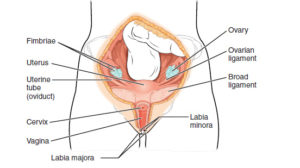Those suffering from chronic uterine pain or serious pelvic disease may consider surgery to remove the uterus. Women who undergo a hysterectomy are typically older (past menopause) or have a life-threatening disease such as cancer.

What is it?
Women who have advanced diseases of the uterus or who have other serious pelvic disorders may wish to undergo a hysterectomy. This procedure involves the partial or complete removal of the uterus. It is common for this procedure to be paired with other surgeries to remove the ovaries, cervix, and fallopian tubes. This procedure is usually not preferred in women who are of childbearing age since hysterectomy surgeries make it impossible to become pregnant.
How to Prepare
In the weeks before surgery, patients should stop smoking and maintain a healthy diet. If the patient is overweight or obese, the doctor may recommend trying to lose some weight, as obese patients usually experience more blood loss during surgery. Patients should follow their doctor’s instructions on eating and drinking the days before surgery. Patients may have a difficult time moving/working after surgery, so preparations should be made to make living easier at home/work. The hospital stay for a hysterectomy is usually between one and three days.
What happens during the process?
Depending on the surgery, patients may have their uterus removed through incisions in their abdomen or in their vagina. General or local anesthesia will be used for all hysterectomy procedures. After making the appropriate incisions, the surgeon will remove part or all of the uterus. If the surgeon believes other organs may be diseased, he/she may remove those as well. After removing the uterus, the incisions are stitched back together.
Risks and Complications
- Adverse reactions to anesthesia
- Unresolved pain
- Excessive bleeding and infection
- Damage to the bladder, intestines, or surrounding blood vessels
Disclaimer:
All GlobeHealer Site content, including graphics, images, logos, and text, among other materials on the site are for educational purposes only. This content is not intended to be a substitute for professional medical advice, and you should always contact your physician or qualified health provider for information regarding your health. Information on this site regarding the overview, diagnosis, and treatment of any kind should be looked at, in addition to the advice and information of your health care professional. Do not disregard medical advice or delay seeking treatment or medical advice due to information found on the GlobeHealer site.
If there is even the possibility that you may have a medical emergency, seek treatment, call your doctor, or call your local emergency telephone number immediately. GlobeHealer does not endorse being the first line of communication in case of emergency and does not endorse any specific test, physician, facility, product, procedure, opinion, or other information that is or may be mentioned on this site or affiliated entities. Reliance of any and all information provided by GlobeHealer, its employees, affiliations, others appearing on the Site under the invitation of GlobeHealer, or visitors of the site is solely at your own risk and is not the responsibility of GlobeHealer.
Image Source:
https://upload.wikimedia.org/wikipedia/commons/5/57/Figure_28_02_01.JPG
